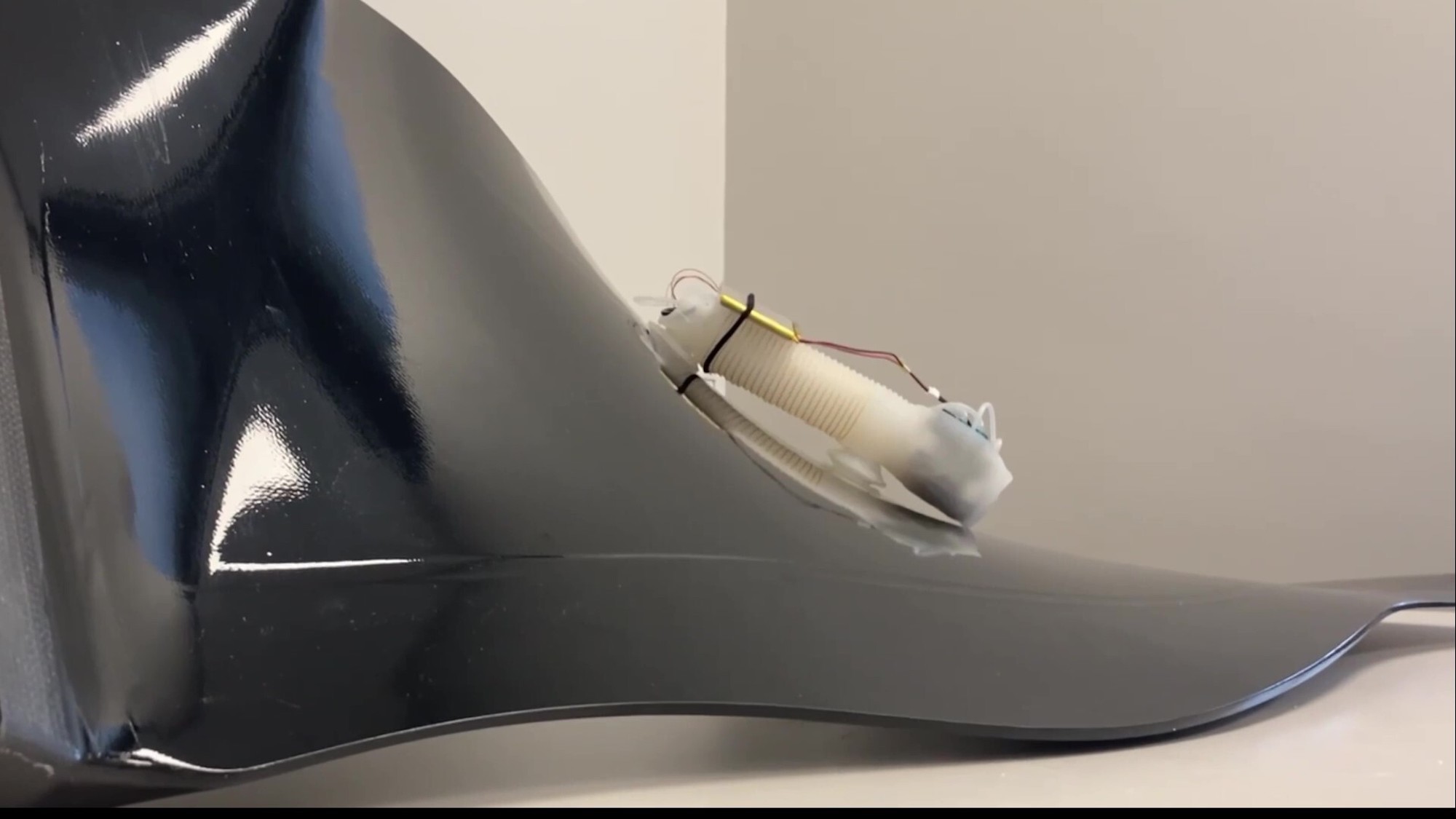

A new wormy robot could help with jet engine inspections at GE Aerospace, according to an announcement this week. Sensiworm, short for “Soft ElectroNics Skin-Innervated Robotic Worm,” is the newest outgrowth in GE’s line of worm robots, which includes a “giant earthworm” for tunneling and the “Pipeworm” for pipeline inspection.
Jet engines are complex devices made up of many moving parts. They have to withstand factors like high heat, plenty of movement, and varying degrees of pressure. Because they need to perform at top speed, they often need to undergo routine cleaning and inspection. Typically, this is done with human eyes and with a device like a borescope, which is a skinny tube with a camera that’s snaked into the engine (technically known as a turbofan). But with Sensiworm, GE promises to make this process less tedious and that it could happen “on wing,” meaning the turbofan doesn’t need to be removed from the wing for the inspection.
Like an inchworm, Sensiworm moves forward on its own using two sticky suction-like parts on its bottom to squish into crevasses and scrunch around the curves of the engine to find areas where there are cracks or corrosion, or check to see if the heat-protecting thermal barrier coatings are as thick as they should be.
It comes with cameras and sensors onboard, and is attached through a long, thin wire. In a demo video, this robot showed that it can navigate around obstacles, hang on to a spinning turbine, and sniff out gas leaks.
These “mini-robot companions” could add an extra pair of eyes and ears, expanding the inspection capabilities of human service operators for on-wing inspections without having to take anything apart. “With their soft, compliant design, they could inspect every inch of jet engine transmitting live video and real-time data about the condition of parts that operators typically check,” GE Aerospace said in a press release.
“Currently, our demonstrations have primarily been focused on the inspection of engines,” Deepak Trivedi, principal robotics engineer at GE Aerospace Research, noted in the statement. “But we’re developing new capabilities that would allow these robots to execute repair once they find a defect as well.”
Flexible, squiggling robots have found lots of uses in many industries. Engineers have designed them for medical applications, search and rescues, military operations, and even space ventures.
Watch Sensiworm at work below:

